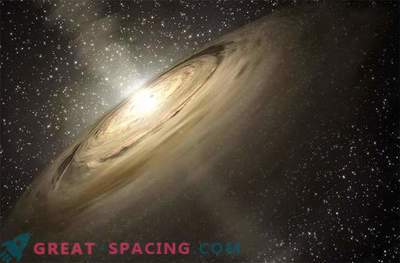
In relation to its long flight, Hubble can only determine short-term changes in celestial objects. For example, take Beta Painter. This is a star, whose age is estimated at 20 million years, and Hubble, watching the change in the movement of dust in the protoplanetary disk, recorded the birth of a massive exoplanet.
Astronomers were able to compare the observations of the Hubble Beta Painter for 1997 and 2012 and traced the morphological changes in its protoplanetary disk.
Supposedly, the exoplanet has an orbital period between 18-20 years. Hubble also noticed a slight change in the dust distribution of the protoplanetary disk, confirming some models of how protoplanetary disks are mixed with exoplanets.
"Some computer models predicted a complex internal disk structure due to gravitational attraction from short-period giant planets," said Daniel Apay from the University of Arizona. "The new images reveal the inner world and confirm the predicted structures. Based on these data, we can draw conclusions about the existence of other exoplanets in other protoplanetary disks." Thanks to these observations, astronomers will be able to conclude that the circumstellar dust moves in agreement with the exoplanet, like a carousel. This suggests that the internal dusty disk is smooth and solid.
However, Beta Painter is not believed to be a “typical” young star with a protoplanetary disk.
Painter's Beta is the first star with a circumstellar disc detected. It is believed that asteroids and comets in the system constantly collide, filling the disk with a large amount of dust. In addition, the found structure in the form of a blade, scientists believe, is a dusty residue of a body the size of Mars.











































